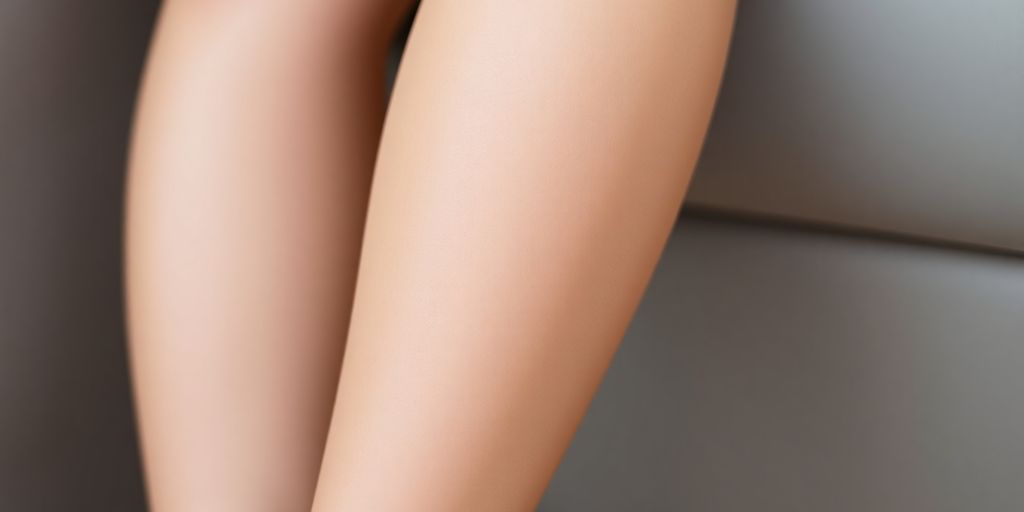Ever wonder about those snug sleeves you see folks wearing at the gym or even just out and about? They're called compression sleeves, and they're more than just a fashion statement. These simple pieces of gear might just be the secret weapon you've been looking for to help your body feel better, whether you're an athlete, dealing with a medical issue, or just want to feel good day-to-day. This guide will break down everything you need to know about compression sleeves, from how they work to how to pick the right ones.
Key Takeaways
- Compression sleeves help your blood move better by putting gentle pressure on your arms.
- Lots of people, like athletes and those with certain health problems, can get good results from using compression sleeves.
- Wearing these sleeves can make your muscles less tired and sore, and might even help stop injuries.
- Getting the right size and material for your compression sleeve is important so it works best for you.
- To get the most out out of your compression sleeves, use them correctly, know when to wear them, and take good care of them.
Understanding Compression Sleeves
What Do Compression Sleeves Do?
Compression sleeves are basically snug garments, usually made from some kind of elastic material, that you wear on your arms or legs. They're designed to fit tightly, applying gentle pressure. The main idea is to improve blood flow. Think of them as a way to give your muscles a little extra squeeze, which can have some interesting effects. They are often used as calf compression sleeves by cyclists.
How Do Compression Sleeves Work?
The way compression sleeves work is actually pretty straightforward. The pressure they apply helps to squeeze your veins, which in turn helps blood flow back to your heart. It's like giving your circulatory system a little boost. This increased blood flow can help deliver more oxygen to your muscles and remove waste products more efficiently. The whole design is simple, and the principle of improved blood flow is well worth it!
Do Compression Sleeves Really Work?
Okay, so do they actually do anything? Well, there's evidence suggesting that they can help with a few things. Some studies show that compression sleeves can improve blood flow, reduce muscle soreness, and even speed up recovery after exercise. They are proven to increase blood flow, thanks to constant stimulation to the skin. That pressure on your arm increases blood flow to the area, leading to faster muscle recovery. Doctors may also prescribe them to reduce and prevent swelling or bruising. There are plenty of scientific studies that support these awesome benefits!
It's important to remember that everyone's different, and what works for one person might not work for another. Some people swear by compression sleeves, while others don't notice much of a difference. It's worth trying them out to see if they benefit you personally.
Who Benefits From Compression Sleeves?

Compression sleeves aren't just for elite athletes; a wide range of people can find them helpful. It's all about understanding how they work and whether those benefits align with your needs. Let's break down some key groups who might want to consider adding compression sleeves to their routine.
Athletes and Active Individuals
For athletes, compression sleeves are often seen as a way to get an edge. They can aid in muscle recovery after intense workouts or competitions. Think about runners, basketball players, weightlifters, or anyone who puts their body through a lot. The sleeves can help reduce muscle soreness and fatigue, allowing for quicker recovery times and more consistent training. They might also offer a bit of extra support during activity, potentially reducing the risk of certain injuries. I know a few people who swear by them for long runs – they say it makes a noticeable difference in how their legs feel afterward.
Individuals with Medical Conditions
Compression sleeves aren't just for sports; they also have medical applications. People with conditions like lymphedema or varicose veins can benefit from the improved blood flow and reduced swelling that compression provides. Sometimes, doctors even prescribe them after surgery to aid in healing and prevent blood clots. If you're dealing with a medical issue that affects circulation or causes swelling, it's worth talking to your doctor about whether compression therapy could be a helpful part of your treatment plan.
Everyday Wellness and Recovery
You don't have to be an athlete or have a medical condition to enjoy the benefits of compression sleeves. They can be useful for anyone who spends a lot of time on their feet, like nurses, teachers, or retail workers. Even just wearing them during long flights can help prevent swelling and discomfort. I've even heard of people using them to help with general muscle soreness after a particularly tough day at work. It's all about finding ways to support your body and promote better circulation, no matter your activity level.
I started using compression sleeves a few months ago because I was experiencing a lot of leg fatigue after work. I'm on my feet all day, and by the time I got home, my legs would ache. Since I started wearing the sleeves, I've noticed a significant improvement. My legs feel less tired, and I don't have as much swelling. It's a small change, but it's made a big difference in my overall comfort.
Key Benefits of Wearing Compression Sleeves

Enhanced Blood Circulation
Compression sleeves apply gentle pressure, which helps your arteries contract and expand. This action is similar to a massage, promoting better blood flow from your muscles back to your heart. Think of it like squeezing a hose to increase water flow. Improved circulation can lead to better temperature regulation and more efficient muscle function.
Reduced Muscle Fatigue and Soreness
One of the main reasons athletes use compression sleeves is to combat muscle fatigue and soreness. By improving blood flow, compression sleeves help deliver more oxygen to the muscles and remove waste products that contribute to fatigue. This can lead to quicker recovery times after intense workouts. I know after a long run, my legs feel so much better when I wear my compression socks.
Injury Prevention and Management
Compression sleeves can also play a role in injury prevention and management. The support they provide can help stabilize muscles and joints, reducing the risk of strains and sprains. They are also useful in managing conditions like lymphedema and other lymphatic system obstructions.
I've found that wearing compression sleeves during my workouts helps me feel more secure and supported. It's like having an extra layer of protection against potential injuries. Plus, the reduced muscle soreness afterwards is a huge bonus.
Here's a quick look at activities where compression sleeves can be beneficial:
- Running
- Weight Training
- Hiking
- Basketball
Choosing the Right Compression Sleeves
Finding the right compression sleeve can feel like a mission, but it's worth it to get the most out of them. It's not just about grabbing the first one you see; you need to think about fit, material, and what you're planning to use it for. Let's break it down.
Finding the Perfect Fit
Getting the right size is super important. If it's too tight, it'll cut off your circulation, which is the opposite of what you want. Too loose, and it won't do anything at all. So, how do you nail the fit? First, measure the part of your arm or leg where the sleeve will sit. For arm sleeves, that's usually around your bicep or forearm. For leg sleeves, measure your calf. Use a flexible measuring tape, and make sure it's snug but not too tight. Then, check the brand's sizing chart. Don't assume all brands are the same; they definitely aren't. Each one has its own measurements, so always double-check. If you're between sizes, it's usually better to go for the bigger one. You can also check out BSERA Compression Footless Sleeves for a comfortable fit.
Material and Design Considerations
The material matters more than you might think. You'll want something breathable, especially if you're using the sleeves for workouts. Moisture-wicking fabrics are a must to keep sweat from building up. Some sleeves also have antibacterial properties, which is a nice bonus. Design-wise, think about what you need the sleeve for. Are you looking for extra support? Some sleeves have targeted compression zones for specific muscles. Also, consider the overall construction. Flat seams can help prevent chafing, which is a big deal if you're wearing the sleeve for long periods. Here's a quick rundown:
- Breathability: Look for materials like nylon or spandex blends.
- Moisture-wicking: Keeps you dry and comfortable.
- Targeted compression: Provides extra support where you need it.
- Seam construction: Flat seams reduce chafing.
Forearm Versus Full-Arm Sleeves
Forearm or full-arm? That is the question. Forearm sleeves are great if you just need support for your lower arm muscles. They're also less restrictive, which some people prefer. Full-arm sleeves, on the other hand, offer more coverage and can provide support all the way up to your shoulder. This can be helpful if you have issues with your elbow or upper arm. A full-arm sleeve can be a great solution for contact sports or any situations that might require additional elbow support. Most of the time, which one you want for yourself will come down to personal preference. It really depends on what you're trying to achieve with the sleeve. If you're unsure, maybe try both and see which one feels better for you. You can always check out shop sleeves to see what's available.
Ultimately, choosing the right compression sleeve is about finding the best balance of fit, material, and design for your specific needs. Take your time, do your research, and don't be afraid to try a few different options until you find the perfect one.
Maximizing the Effectiveness of Your Compression Sleeves
Proper Usage Guidelines
Okay, so you've got your compression sleeves. Now what? It's not just about slapping them on and hoping for the best. There's a right way and a wrong way to use them to actually get the most out of them. First off, make sure you're putting them on correctly. They should be snug, but not so tight that they're cutting off your circulation. If your fingers are turning blue, that's a bad sign! Also, pay attention to the length. The sleeve should cover the muscle area you're targeting.
- Ensure the sleeve is smooth and without wrinkles to avoid uneven pressure.
- Gradually increase wear time to allow your body to adjust.
- Wash your sleeves regularly to maintain elasticity and hygiene.
When to Wear Your Sleeves
Timing is everything. You might be wondering when the best time is to rock those compression arm sleeves. Well, it depends on what you're trying to achieve. If you're an athlete, wearing them during your workout can help with muscle fatigue. If you're dealing with swelling, wearing them throughout the day might be more beneficial. And if you're using them for recovery, putting them on after a tough workout or a long day on your feet can make a big difference. Listen to your body and adjust accordingly.
Think of compression sleeves as a tool in your wellness arsenal. They're not a magic bullet, but when used correctly and at the right time, they can be a game-changer for your performance and recovery.
Care and Maintenance for Longevity
If you want your muscle recovery sleeves to last, you've got to take care of them. That means washing them regularly, but not just throwing them in with your regular laundry. Use a mild detergent and avoid harsh chemicals or bleach. It's best to hand wash them or use a delicate cycle in your washing machine. And definitely don't put them in the dryer! The heat can damage the elastic fibers and shorten their lifespan. Instead, lay them flat to dry.
| Care Tip | Description |
|---|---|
| Washing | Hand wash or delicate cycle with mild detergent. |
| Drying | Lay flat to dry; avoid direct sunlight or heat. |
| Storage | Store in a cool, dry place away from sharp objects. |
| Inspection | Regularly check for tears or loss of elasticity. |
Common Misconceptions About Compression Sleeves
Can You Sleep in Compression Sleeves?
There's a lot of debate about wearing compression sleeves while you sleep. Generally, it's not recommended unless specifically advised by a doctor. When you're resting, your body's circulation is usually pretty good on its own. Plus, sleeping in a compression sleeve could potentially lead to discomfort or even numbness if you end up putting pressure on it wrong during the night. It's usually best to give your arms a break and let your skin breathe while you sleep.
Think of it like this: your muscles need time to recover without constant external pressure. Sleep is a great opportunity for that natural recovery process to happen.
Compression for Performance Enhancement
Some people think compression sleeves are like magic performance boosters, but that's not really the whole story. While they can help with blood flow and muscle recovery, they aren't going to turn you into a super athlete overnight. They might give you a slight edge by reducing fatigue, but proper usage guidelines are more important for overall performance. It's more about supporting your body's natural functions than providing some kind of artificial boost.
Addressing Flabby Arms
Let's be real: compression sleeves aren't a miracle cure for "flabby arms." They can provide a smoothing effect while you're wearing them, but they won't actually change the underlying muscle or fat. If you're looking to tone your arms, you're better off focusing on exercise and diet. Think of compression sleeves as more of a temporary solution or a support during workouts, not a long-term fix. They can help with enhanced blood circulation, but they won't magically sculpt your arms.
Wrapping Things Up
So, there you have it. Compression sleeves are pretty neat, right? They can help with a bunch of stuff, from making your muscles feel better after a workout to helping with swelling. It's not some magic bullet, but the idea behind them is pretty simple: better blood flow. And that can make a real difference for a lot of people. Whether you're an athlete, someone dealing with a health issue, or just curious, giving them a try might be worth it. Just remember to pick the right size and type for what you need. It's all about finding what works for you and your body.
Frequently Asked Questions
What exactly do compression sleeves do?
Compression sleeves are special garments, usually for your arms, made from stretchy material. They fit snugly and gently squeeze your arm. This squeezing helps your blood move better, which can do a lot of good things for your muscles and overall comfort.
Do compression sleeves actually work?
Yes, they really do! The main way they work is by helping your blood flow. When your blood moves more efficiently, it can bring more good stuff like oxygen to your muscles and take away waste products faster. This is why many people, from athletes to those with certain health issues, find them helpful. There's good science to back up these benefits.
How do compression sleeves help your body?
They work by putting a gentle, steady squeeze on your arm. Think of it like gently pressing on a garden hose to make the water inside flow more strongly. This pressure helps your blood vessels, especially the arteries, work more efficiently. It encourages better circulation, which means more oxygen gets to your muscles and waste products are removed quicker.
Who should consider wearing compression sleeves?
Lots of different people can benefit! Athletes often use them to help their muscles recover and to prevent soreness. People with certain medical conditions that cause swelling or poor circulation also find them very useful. Even if you're just looking for everyday comfort or faster recovery after a tough day, compression sleeves can be a good choice.
What kinds of problems do compression sleeves help with?
They can help with many things! They're great for reducing muscle soreness and tiredness, especially after exercise. They also help prevent injuries by keeping your muscles supported. For people with swelling or certain circulation problems, they can make a big difference. Basically, anything that benefits from better blood flow can be helped by compression sleeves.
Is it okay to sleep while wearing compression sleeves?
Generally, it's not a good idea to sleep in compression sleeves. When you're lying down, your blood flow is usually already pretty good because your body isn't fighting gravity as much. Also, sleeping in them might cause uncomfortable pressure points or even numbness if you shift positions. It's best to give your arms a break and let your skin breathe while you sleep.




Share:
Understanding and Utilizing Compression Wraps for Lymphedema Management
The Ultimate Guide to Choosing Compression Wraps for Legs